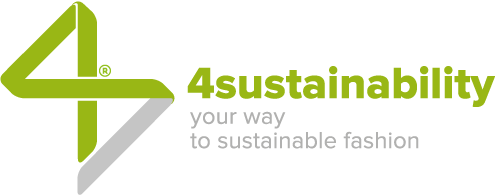We hear a lot about Life Cycle Assessment (LCA). But what does this tool consist of and why is it gaining more and more importance in the perception of legislators and the market? In this in-depth discussion we try to shed light on it while also introducing distinctions.
LCA: how many people really know the meaning of this acronym? LCA stands for Life Cycle Assessment and the implied part is “of products.” Although from a scientific point of view this methodology has been known and used for a long time, only recently are we seeing its dissemination and application by companies and, therefore, its communication to the market.
This type of survey was created to provide companies with a structured and reliable scientific tool to use in the analysis of a good’s production processes in order to identify process improvement and efficiency actions aimed at reducing consumption and associated impacts.
In fashion and all industries in general, it is increasingly being used to measure the environmental impact of a product, with the main purpose of showing the world how “cool” we are. Although, as we will see later, LCA was supposedly born to analyze, not to communicate.
Cradle-to-cradle
The LCA methodology, if we reflect on it, has truly significant innovative contents, because it considers the product no longer and not only for its final characteristics, but as the result of all the steps to make it, of the subsequent stages of use and end of life, assessing its impacts from the consumption of resources (raw materials, water, energy, auxiliary products) and releases into the environment (discharges, emissions, waste, discards). It is no coincidence that we speak of cradle-to-grave analysis, which, in a circular economy logic, we could rephrase as cradle-to-cradle.
For some applications, it is possible to limit the analysis to the production stages and thus to a part of the product life cycle. We could call this cradle-to-gate analysis that typically concerns manufacturers of semi-finished products.
To communicate results and assertive statements about a product to the outside world, however, it is not possible to exclude the use and end-of-life phases, which can significantly affect the final impact. It is also necessary to engage consumers by holding them accountable for the consequences of their purchasing choices.
For a garment used over a long period of time, the impacts from its maintenance and especially from the washing and drying phases will also have to be considered. These impacts will increase the longer the garment lasts, while cushioning those from the production processes.
Mind the fake!
The growing importance of this type of investigation can also be inferred from a recent guidance from the Danish Antitrust Authority, which stated that coining a sustainability claim without accompanying LCA actually exposes the company to suspicion of greenwashing.
The assumption of the vademecum says a lot: without accurate data, it is not legitimate to claim sustainability.
The document clearly states that due to the difficulty of defining any product or service as generically sustainable and in order not to run the risk of formulating vague, incorrect or equivocal messages – and therefore actionable as misleading advertising – only a life cycle analysis (LCA) can shelter economic operators and consumers.
The Danish Ombudsman’s guidelines come after a 2021 European Commission study conducted on corporate websites regarding sustainability claims for products and services. More than half of these green claims were found to be illegal: 37% because they were based on vague and general assertions, the remaining 59% because they lacked objective information and supporting data.
How to proceed with LCA: the 4s MATERIALS approach
4s MATERIALS is the 4sustainability roadmap initiative aimed at gradually replacing raw materials with sustainable alternatives. LCA analysis is one of the methods and standards listed in the library for conversions, including all those materials that are authentically sustainable because they are supported by analytical data or certifications attesting to positive sustainability attributes. A company best expresses its materials conversion strategy, indeed, only by increasing in volume the percentage of sustainable materials.
Speaking of standards for LCA calculation, those that clearly and unambiguously define principles, requirements and guidelines for analysis are ISO 14040 and ISO 14044. From these standards may descend specific rules for product types – so-called PCRs – Product Category Rules, developed by the bodies that then issue product certifications – but the gist is that an LCA project assumes going very deep into the collection of data to be used.
Data should mostly be primary data, which means collected “at the source” by the companies performing the relevant processes, because secondary data from databases alone are not enough.
The challenge, in the case of product companies, is to strike a balance between the burden of a survey and its accuracy and reliability. Conducting a study comparing different products by basing it only on secondary data, for example, is easier but can generate results whose margin of uncertainty makes comparison impossible.
As Francesca Rulli well explains, “the environmental impact of a product depends on the raw material you use, but also on the ‘factories’ where you choose to carry out the production cycles: do they use renewable energy? how much water do they require? do they adopt recipes with green chemistry? The impact of a product is the reasoned sum of all these attributes, which is why the LCA calculation is so complex: because it assumes that so many different actors (so many different factories…) make available the primary data needed for the investigation.”
What we can rely on to overcome every difficulty on our path is methodology, which involves four well-defined steps for each LCA study:
- definition of the objective and scope
- inventory analysis
- environmental impact assessment
- interpretation
The initial and final stages, which are often overlooked, are the most important ones, first because they clearly establish the purpose of the study and thus also its limitations and, second, because they interpret the results by also calculating the margins of uncertainty.
Comparison and interpretation
In order to properly compare different products, a study must be conducted that, right from the definition of the objectives and framework, establishes the methods and elements of comparison, having at least common elements such as the intended use of the product, the use of virgin or recycled raw material, the object category, etc.
It follows that the interpretation phase is crucial to give the right reading to the results, providing the elements for their proper communication.
Let us now put the case of an LCA study conducted on the same T-shirt by two distinct subjects. The results might be different because the assumptions and stakes defined at the outset are different. Hence the importance of comparing the results of the two studies not only in absolute terms, but also considering the initial targets and working hypotheses. The risk, otherwise, is to communicate results that seem to be better at first glance when they may not be, which can expose us to accusations of fake sustainability with unpredictable effects.
Environmental impacts but more
A closing note of no small importance. “Talking about product impact and therefore production cycles,” Rulli emphasizes, “cannot be limited to environmental aspects alone, but must include social impact assessments based necessarily on the traceability and transparency of the supply chain, which is very fragmented, as we know, and generates an abnormal number of collections each year.
Well, in this context it is utopian to think of doing accurate studies on all products. Just as it is unthinkable for non-experts to be able to check whether assumptions can be actually compared or whether the study is done with primary data or simulations from databases. My view is that a systemic use of this approach is viable on continuous productions, to do research and innovation aimed at reducing process and material impacts. This is the rationale behind our decision to include the LCA study as one of 4s MATERIALS’ recognized initiatives.
Instead, when we talk about product and production impact, we refer to an assessment of the six key dimensions of sustainability – the same ones identified by the six pillars of the 4sustainability roadmap – and then to actual environmental and social impact data.
It is a method focused on concrete measurements and the engagement of a relevant number of stakeholders for comparability of implementation levels over time and transparency about the product. The more manufacturing companies reduce their environmental and social impacts, the more sustainable products the fashion & luxury industry will bring to market.”

